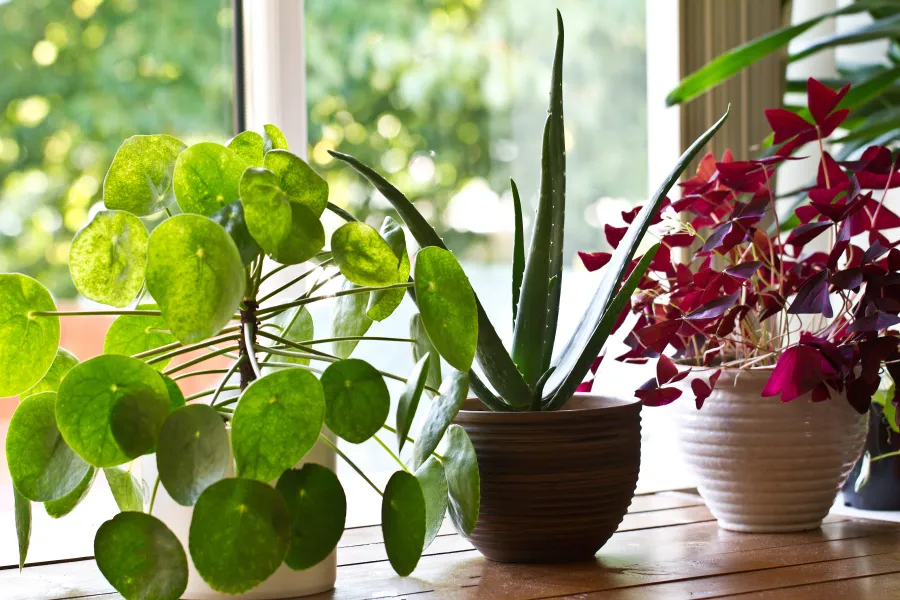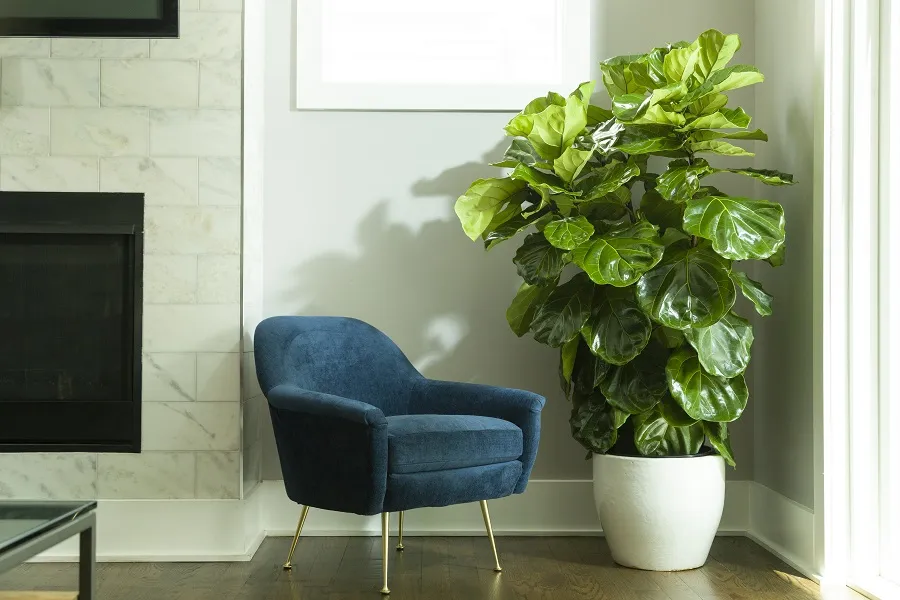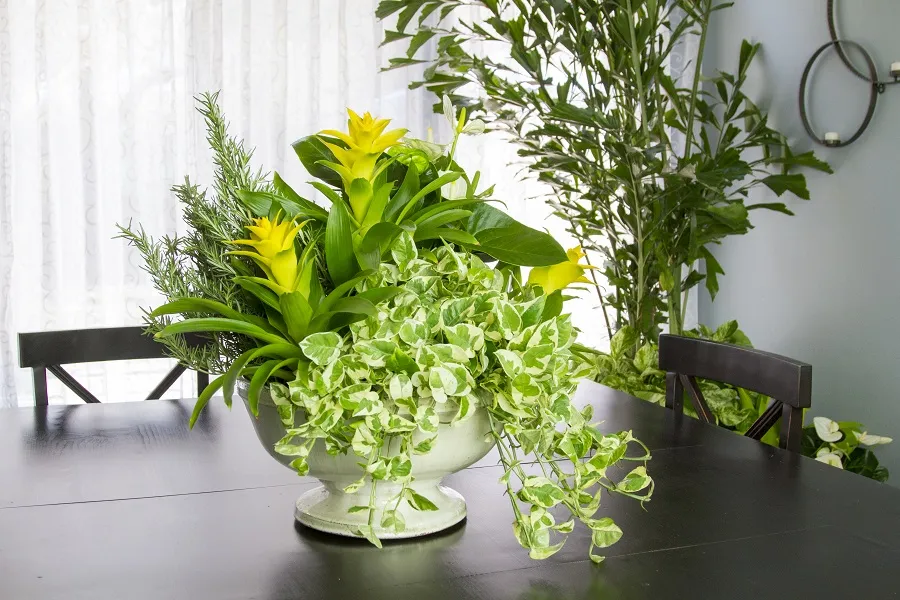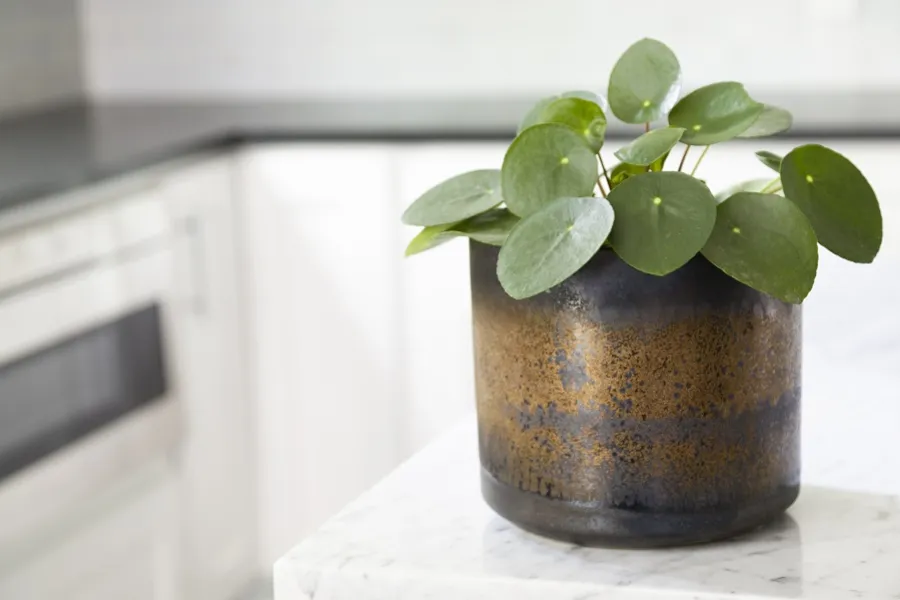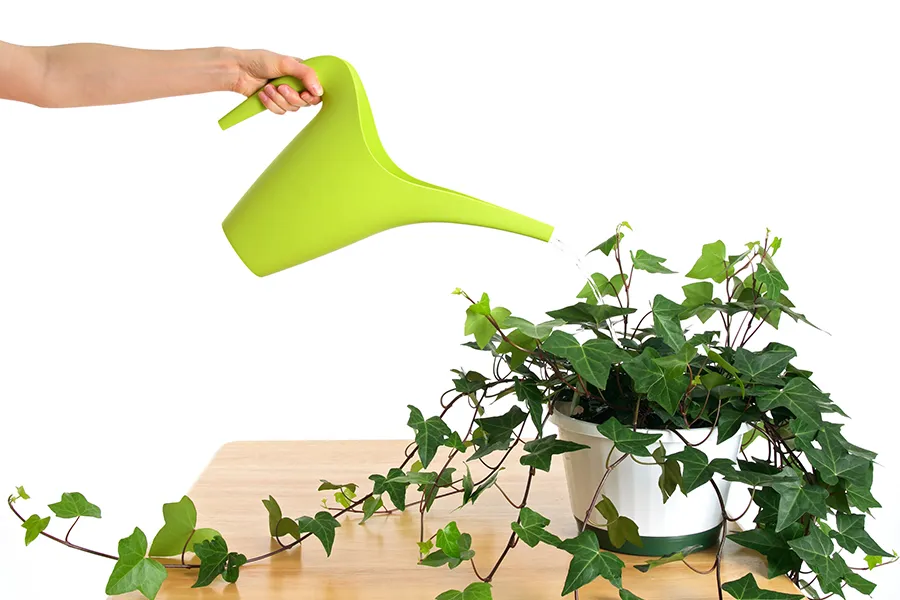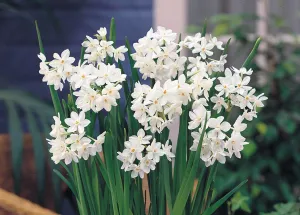
DIY
Choosing the
Right Houseplants
Determine your Light
The majority of plants need some light to grow. If you are unsure of what kind of light an area receives try this simple sheet of paper test:
Hold your hand about 8 inches above a sheet of white paper.
- High Light: You can clearly see the shadow of white paper.
- Medium Light: You can see a blurred shadow.
- Low Light: You can't see a shadow.
Once you know what kind of light you have in your space, you can choose houseplants with those light requirements. It's easy at Armstrong Garden Centers- we have signs for High, Medium and Low light house plants.
Evaluate your Space
Area: How big of an area do you have to work with? How tall or wide can your plant get?
- For large rooms try the "specimen plant look"- choose an interesting and unique stand alone plant for focus like a fiddle leaf fig or a palm. Tall potted palms or trees work great for this.
- Smaller rooms filled with furniture lend themselves more to smaller pots and plants. Try grouping 3 similar pots or plants for a cohesive look.
Time: How much time do you have to devote to caring for your plants? In general, foliage plants generally need less attention than flowering options.
- Short on time: plants such as cacti are succulents are the most low- maintenance.
- Plenty of time: more flowering and demanding houseplants can be considered.
Temperature: Plants grow best under certain temperature requirements.
- Most houseplants thrive in temperatures in the 65-75 degree range during the day and would prefer about 10 degrees cooler at night.
- In winter, dry air can be problematic for plants- many plants need humidity. Try keeping plants near the bathroom or a humidifier.
Pick your Plants
High Light Houseplants
Get an exotic look with the colorful bracts of bromeliads; but while they enjoy high light, it should be indirect. Succulents, cacti and kalanchoe all thrive in high light as well. Crotons offer a colorful foliage option, and the many varieties of ficus (including the popular fiddle leaf fig) offer tall tree-like options for bright, indirect light.
Medium Light Houseplants
Orchids and African violets are colorful, elegant options for medium light. Bamboo and some ferns (Boston, Bird's Nest) like medium light and humidity - so they're a good choice for bathrooms. Peace lilies are a popular, easy care option with pretty green foliage and interesting white flowers.
Low Light Houseplants
Low light situations call for hardy, easy care plants. Pothos is an easy-to-grow, vining plant that looks great in hanging baskets or on bookshelves. The ZZ plant is a tall, succulent-like plant with long, architectural stems that can tolerate very low light like windowless bathrooms or offices. Many ferns do well in low light, too. Sansevieria (a.k.a. mother-in-law's tongue or snake plant) is a very tough plant that can tolerate nearly any kind of light - a great choice for beginners.
Plant Your Houseplants
- Choose a container to complement your decor and the plants.
- Potting Soil: Make sure to choose a nutrient rich potting soil like Dr. Earth Pot of Gold Planting Mix
- Fill the pot leaving about an inch empty at the top.
- Mix a handful of Dr. Earth Root Zone Starter fertilizer to reduce transplant shock and promote root growth for healthy plants.
Care for your Houseplants
- Water thoroughly as needed when the top inch of soil is dry. Drain well.
- Remove spent foliage as leaves occasionally turn brown. This will encourage new growth.
- Fertilize once a month with liquid plant food like Bonide Liquid Plant food.
- Use Leaf Shine to keep leaves glossy and beautiful.

